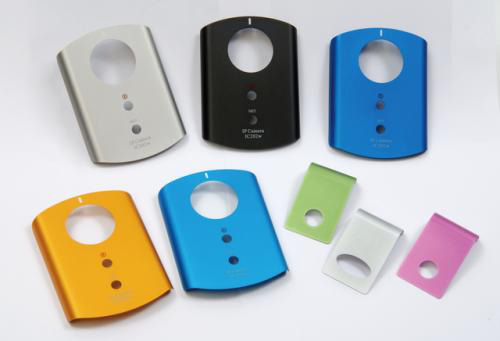 The anodization process generates alumina by electrolysis using the oxidation principle. Alumina, which spontaneously generates colored anodized film, has the function of anti-corrosion and anti-oxidation. Aluminum anodizing film can be divided into blocking type and multi-pass type. A compact barrier oxide film can be obtained by anodizing in nearly neutral electrolyte. This film insulates well and can be used to make capacitors and other devices.
The anodization process generates alumina by electrolysis using the oxidation principle. Alumina, which spontaneously generates colored anodized film, has the function of anti-corrosion and anti-oxidation. Aluminum anodizing film can be divided into blocking type and multi-pass type. A compact barrier oxide film can be obtained by anodizing in nearly neutral electrolyte. This film insulates well and can be used to make capacitors and other devices.
Aluminum is an active metal, which spontaneously forms an oxide film of 0.01 ~ 0.10Lm in the air. This natural oxide film is amorphous, thin and porous, with low mechanical strength. Although it has a certain protection capability for aluminum, it is far from enough to meet people's requirements on the decoration, protection and functional application of aluminum and its alloy. Therefore, the process of anodizing aluminum in electrolyte has been developed continuously. Since the 1920s, the use value of aluminum anodized film has been increasing. Some recent developments will bear fruit in the 21st century.
Aluminum anodizing film
Aluminum anodizing film can be divided into blocking type and multi-pass type. A compact barrier oxide film can be obtained by anodizing in nearly neutral electrolyte. This film insulates well and can be used to make capacitors and other devices. When anodizing in acidic or weakly alkaline electrolytes, they can form multi-pass oxide film due to their ability to dissolve alumina. The membrane has a unique structure. Next to the surface of the metal aluminum is a thin and dense barrier layer on which a thick and loose porous layer is formed. The membrane cells of the porous layer are hexagonal closely packed, with a nano-sized micropore in each center. These holes are uniform in size and perpendicular to the surface of the matrix, and they are equal to each other.
Advantages of pore oxidation film
For a long time, people have paid more attention to the multi-pass oxide film with larger application and rapid development. Its advantages are as follows:
1.high hardness of the barrier layer can exceed corundum;
2.good abrasion resistance, corrosion resistance and chemical stability;
3.the morphology and size of the hole can vary within a larger range with different electrolytic processes, and the thickness of the film can be adjusted;
4.the preparation process is simple with low requirements on environmental conditions and equipment.
Although there is no unified explanation for the morphological changes of the two types of anodic oxide films: blocking type and multi-pass type. The concept of critical current density related to the morphology of the film was proposed based on the systematic study of ion migration in the formation of oxide film in solutions such as chromic acid, phosphoric acid and oxalic acid. If the anodic oxidation current density is higher than the critical current density, the barrier film will be formed. If it is below the critical current density, a multi-pass film is formed. It breaks the traditional view that the morphology of the membrane is closely related to the type of electrolyte.
